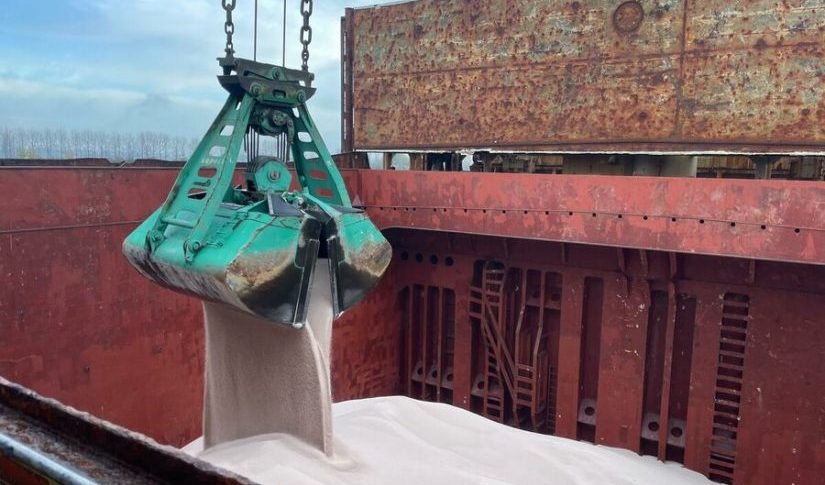Strait of Hormuz Fertilizer Supply Fears, But Market Shrugs It as US-Iran Clash Seems Calibrated
Global markets are recalibrating as US-Iran strikes over the weekend fail to escalate into full-scale conflict, easing fears over the Strait

Quick overview
- Global markets are stabilizing as fears of a full-scale conflict between the US and Iran ease following recent airstrikes.
- Crude oil prices have fallen below $70 per barrel, indicating a shift in market perception towards the US-Iran exchanges as more symbolic than escalatory.
- Despite the calm in markets, significant risks remain regarding potential disruptions in the Strait of Hormuz, which could impact global fertilizer and oil flows.
- Current military actions appear choreographed rather than indicative of a desire for full-scale conflict, with both sides signaling a preference for restraint.
Global markets are recalibrating as US-Iran strikes over the weekend fail to escalate into full-scale conflict, easing fears over the Strait of Hormuz and its impact on global fertilizer and oil flows.
Strait of Hormuz in Focus Amid Middle East Tensions
The Strait of Hormuz, one of the world’s most strategic maritime chokepoints for oil and fertilizer shipments, has returned to the spotlight due to rising tensions between Iran, Israel, and now the United States. Concerns of disruption spiked after the US carried out weekend airstrikes on Iranian facilities, triggering immediate fears of supply chain breakdowns and spiking oil prices. However, price action in global markets suggests a different story.
Markets Stabilize as Fears Ease
Crude oil prices, which initially surged on the geopolitical news, have reversed course. West Texas Intermediate (WTI) crude fell below $70 per barrel—shedding about $7 from recent highs—while Brent followed suit. The US dollar also erased earlier safe-haven gains, indicating that markets now view the US-Iran exchange could be considered more theatrical than escalatory.
This perception is strengthened by signs the strikes were coordinated for maximum symbolic impact but minimal destruction. Reports from Qatar indicate no casualties, and both US and Iranian officials have subtly suggested the conflict is not headed toward a wider war. The market appears to agree, as stocks rise and commodity prices retreat.
Fertilizer Flows in the Crosshairs
Despite the market’s calm, the underlying risks remain significant. A full blockade or slowdown in the Strait of Hormuz could disrupt up to 50% of the global sulfur trade and up to 33% of maritime fertilizer flows. The Middle East, including Iran, Saudi Arabia, Qatar, Oman, and the UAE, plays an outsized role in global fertilizer supply, particularly for urea, sulfur, ammonia, and NPK blends.
This vulnerability is heightened by declining global fertilizer output which suddenly dropped in 2020-21 and has been declining since, especially from China, where export controls slashed urea shipments by over 90% year-over-year in 2024. As such, the Mideast Gulf now handles nearly 20 million tons of sulfur exports annually—half of the global market—primarily destined for North Africa and Asia.
Urea, Ammonia Trade Also at Risk
The Mideast Gulf is expected to export about 18 million tons of urea this year, around a third of the global total. Ammonia exports from the region average 365,000 tons per month, with key consumers in India and Morocco. Any disruption in these trade flows would trigger knock-on effects in agricultural supply chains and food production globally.
Symbolism Over Escalation?
Multiple signs suggest the weekend’s military actions were largely choreographed. Iran’s Supreme National Security Council stated its retaliatory missile count was calibrated to match the number of US bombs used in the initial strike. Much like Trump’s 2017 Syria strikes, the operation appears to have been a message rather than the start of a military campaign. As Monday closes, traders are increasingly confident that neither side seeks a full-scale conflict.
Outlook: Fear Recedes, But Risks Remain
While tensions remain elevated, the swift unwinding of safe-haven trades indicates that investors believe the worst may have been avoided. Trump, eyeing stable oil prices ahead of the election, is unlikely to risk triggering sustained energy market disruption. Iran and Israel continue missile exchanges, but both lack the means or desire to escalate into full-scale ground war.
For now, the Strait of Hormuz remains open, the market remains calm, and the risk premium is retreating—but the situation could shift quickly if rhetoric or missteps escalate.
- Check out our free forex signals
- Follow the top economic events on FX Leaders economic calendar
- Trade better, discover more Forex Trading Strategies
- Open a FREE Trading Account